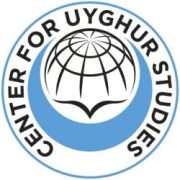Although there is no academic consensus on the exact date the Uyghurs entered the Tarim Basin, by the third millennium BCE, Turkic groups lived in the region. The Tarim Basin Turkified over the next several centuries. During the 8th century, the Uyghurs rebelled against the Second Turkic Khaganate, successfully establishing the Uyghur Khaganate in 744, which lasted until 840 after a famine and civil war.
Three years later, the Uyghur-led kingdom of Qocho was established. Also known as Idiqut, the kingdom was culturally diverse, with not just Uyghur citizens, but Tocharian, Chinese, Iranian, and Sogdian as well. . In 1209, the kingdom surrendered to Genghis Khan, and became one of his vassal states within the Mongolian Empire, serving as the rulers’ bureaucrats and enjoying a close relationship to the khans, until their destruction at the hands of the Chagatai Khanate during the 14th century. It was not until 1759, when the Qing Dynasty conquered the Tarim Basin, that the Chinese gained control over what is now East Turkistan.
Uyghurs established independent states within East Turkistan 3 times. The first of which was founded in 1863 by Mehmet Yakup Beg, and was short-lived, falling under Chinese occupation again after his death. The Manchu Dynasty began occupying East Turkistan in 1876, and changed the region’s name to Xinjiang, meaning “New Territory.” Between 1912 and 1932, the Uyghur people attempted to rise up against the Chinese government multiple times.
In 1928, Jin Shuren declared himself governor after assassinating his predecessor. Jin enforced Sinicization upon the proudly Uyghur peoples living in the region, forbade religious activities such as participating in the hajj, and forced Chinese officials into the positions that local leaders previously held. In 1930, Jin stole Uyghur farmland and repatriated it to Chinese living in the region, while also doubling taxes of the Uyghur population. In 1932, Uyghurs attempted to establish an independent state for a second time, beginning with an uprising in Kumul City. A year later, in late 1933, the Islamic Republic of East Turkistan was established in Kashgar, led by united Uyghurs, Uzbeks, Kazakhs, and Kyrgyz. Despite only maintaining independence for six months, East Turkistan was the first government to call itself an Islamic republic. With help from the Soviet Union, who were afraid that what happened in East Turkistan would inspire Turkic communities within Russia to revolt next, the Chinese crushed the small state, killing between 50,000 and 100,000 Uyghurs, Uzbeks, Kazakhs and Kyrgyz.
The Uyghurs, however, never gave up their efforts, and eventually re-established the independent Republic of East Turkistan in 1944, with the help of the Soviet Union, who were seeking retribution from China after the governor Sheng Shicai expelled their diplomats from the area. After World War Two, leaders of the USSR, America, and Britain came together in Yalta to create the new world order. At the February 1945 meeting, the basis of the decisions which would affect both the situation in Europe and the fate of the geographic distributions of Central Asian countries, dubbed ‘Russia’s backyard’, would be determined. In June, Chinese and Russian leaders came together in Moscow and signed the China-Soviet agreement. With the agreement, Russia officially ceased support for Uyghurs, who struggled for their independence in East Turkistan, as the price of their concessions from America at the Yalta Conference. Nevertheless, the Republic of East Turkistan survived until its brutal occupation by Mao Zedong in 1949.
Since then, Uyghurs and other Muslim communities have been systematically assimilated and forced to abandon their religion. After the September 11 terrorist attacks, the Chinese government developed a new narrative and increased its pressure on the Uyghurs, branding their persecution of Uyghurs a ‘war on terror,’ and consequently tried to influence public opinion to believe that false presentation. The Beijing regime justifies today’s ‘No Mercy’ campaign based on the riots and protests which took place in 2009 and 2014. The impetus for the Chinese Communist Party to increase pressures in East Turkistan is both economic and geopolitical. East Turkistan is a geopolitically strategic location for the ‘Belt and Road Initiative’ which the Chinese government announced in 2013. As a result, it continues to disregard the Uyghurs demands for independence and commits extensive human rights violations and genocide in East Turkistan.
Copyright Center for Uyghur Studies - All Rights Reserved
